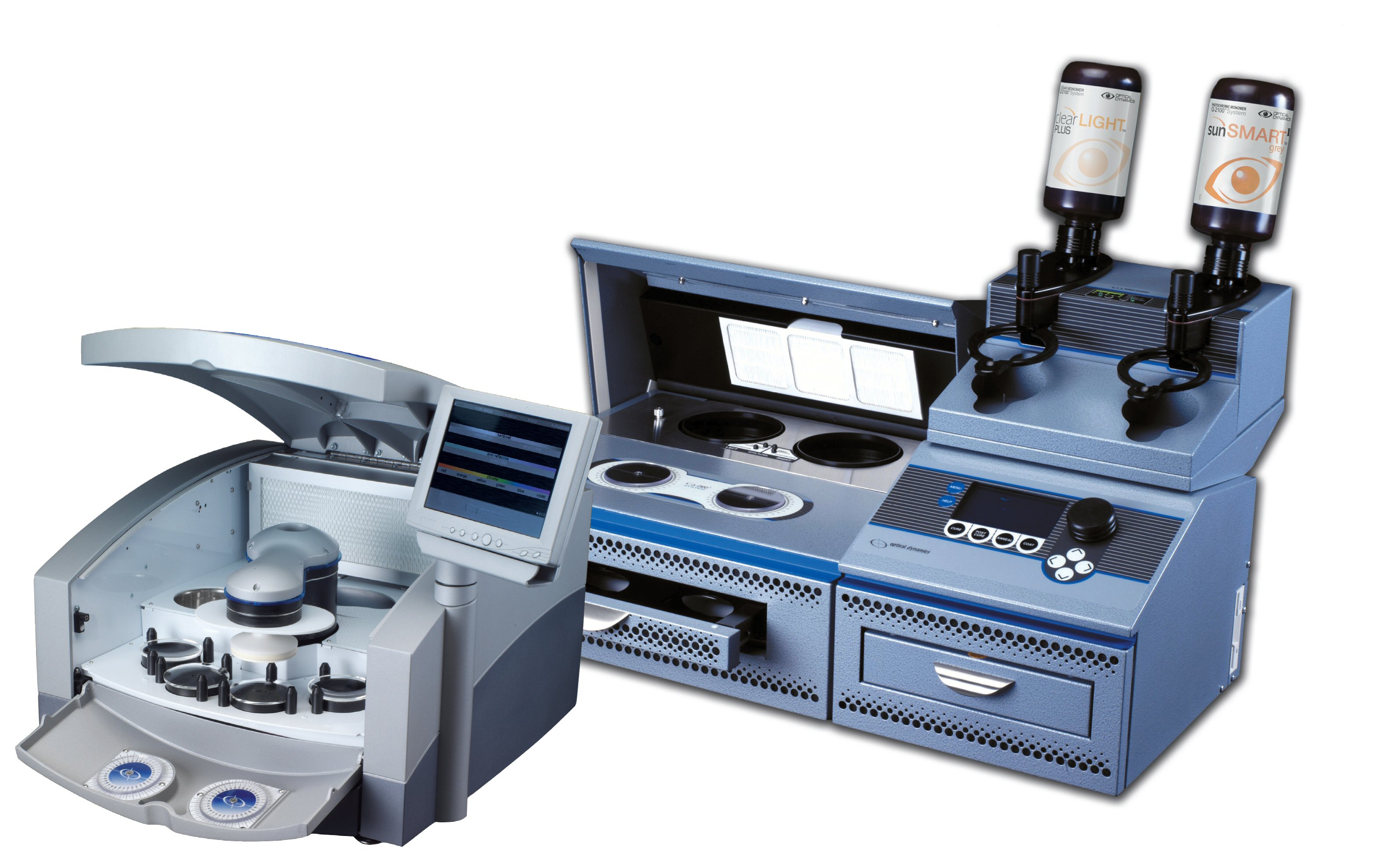Offer your patients one-hour lenses while cutting lab costs in half with the Q-2100R Digital Lens System from Optical Dynamics.
Kenneth N. Johnson, ABOM, NCLC, LDO, Vision Care Product News
Do you want to offer patients same-day lenses cast in-house? Do you want to reduce your lab bills? If so, an in-office lens casting system might be the answer. The Q-2100R Digital Lens System from Optical Dynamics can help grow your business while driving down costs by up to 50%.
FREE-FORM TECHNOLOGY
The Optical Dynamics Q-2100R Digital Lens System incorporates free-form technology into the design and manufacture of the progressive and single vision molds it supplies with the unit. In this way, the lenses made with these digital molds benefit from the features of free-form manufacturing. One advantage is the increased surface accuracy of the lens designs, another is the increased power accuracy of the prescription created. The outcome is better surface quality and more accuracy in the curves generated through much tighter tolerances.
HOW IT WORKS
To make a lens, free-form glass molds are injected with the liquid monomer using the Q-2100R Flash Fill System. The Q-2100R is computerized and easy for staff to master. After the Rx has been entered, the appropriate molds are loaded. The machine scrubs the molds under high pressure to ensure cleanliness, and if an anti-reflective (AR) treatment is to be applied, it is done at this stage. The molds are assembled and injected with liquid polymer. The material is then cured in a light chamber, followed by a post-curing chamber, after which your AR Rx lenses are done. The whole process takes 30 to 90 minutes
LENS OPTIONS
Optical Dynamics offers a family of premium progressive, bifocal, and single vision lenses that are custom molded to a patient’s exact prescription. These are produced using a variety of progressive lens design molds, and both spherical and aspherical FT28 molds as well as aspheric single vision molds. Another option is atoric back molds for minus lenses to further control curves and distortion for myopes. The company’s proprietary liquid monomer, called clearLIGHT PLUS, is available in a clear form. It also has three photochromic options named sunSMART II grey, sunSMART II brown, and a new extra active sunglass version called ultraSUN II. All the lenses, according to Optical Dynamics, have an impact resistance that meets FDA standards even when cast to a 1.5mm center thickness, work well with drill mounts, and are tintable.
If you’re looking to increase profits, reduce turnaround time, and add in-house lens casting, the Q-2100R may be your answer.
Kenneth N. Johnson is the Optical Manager at Professional Eyecare in Waterford CT.
 Eyecare Business by Alicia Hoglund
Eyecare Business by Alicia Hoglund

 FRANKFORT, Ky.—Legislation governing telehealth and online eye tests in Kentucky that had been debated by proponents and opponents of the tests has been signed into law by Governor Matt Bevin, and both sides are claiming victory. The new law, House Bill 191, known as the
FRANKFORT, Ky.—Legislation governing telehealth and online eye tests in Kentucky that had been debated by proponents and opponents of the tests has been signed into law by Governor Matt Bevin, and both sides are claiming victory. The new law, House Bill 191, known as the  Kansas: No vision care insurance policy…or discount plan that provides covered services or materials will be allowed to limit the choice of sources and suppliers of materials by a patient of a vision care provider.
Kansas: No vision care insurance policy…or discount plan that provides covered services or materials will be allowed to limit the choice of sources and suppliers of materials by a patient of a vision care provider. CORNEA: Like a window, this clear, transparent front covering admits light, begins the refractive process, and keeps foreign particles out.
CORNEA: Like a window, this clear, transparent front covering admits light, begins the refractive process, and keeps foreign particles out.
 ning: If you are hiring employees in their 20’s and even 30’s, don’t stick them in the back room to read paperwork and training manuals their first week. While it’s a training method that older workers are comfortable with, it doesn’t work with Gen Y. Little things like having business cards printed and waiting for the new hire set the tone for success…
ning: If you are hiring employees in their 20’s and even 30’s, don’t stick them in the back room to read paperwork and training manuals their first week. While it’s a training method that older workers are comfortable with, it doesn’t work with Gen Y. Little things like having business cards printed and waiting for the new hire set the tone for success…